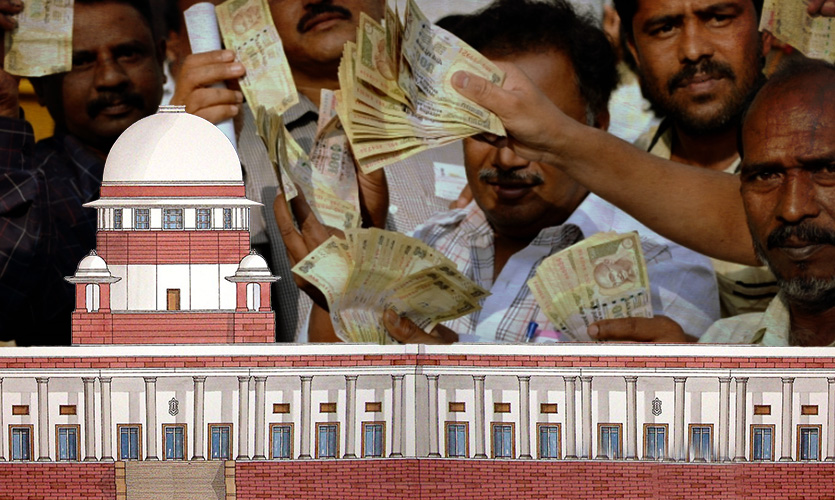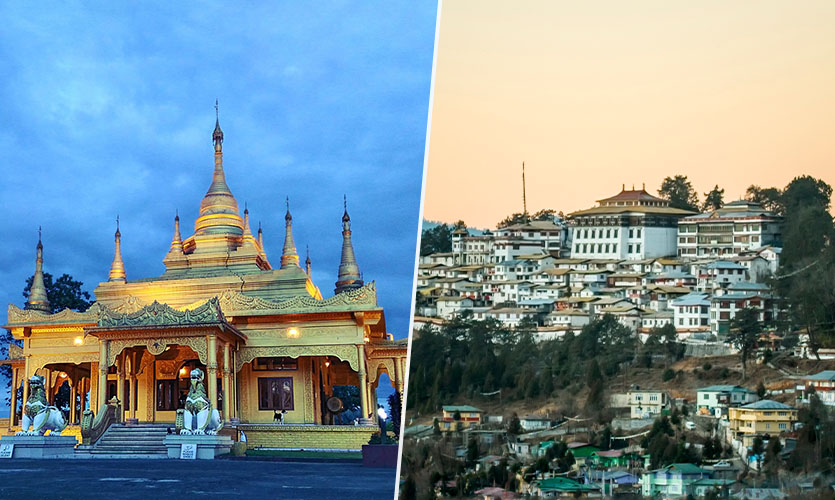On Wednesday, the Supreme Court began hearing more than 50 petitions filed by lawyers and rights groups, against the decision of demonetisation. Raising many serious questions on demonetisation, the Court has asked the Centre and the Reserve Bank of India (RBI) to share the objectives of banning the use of 500 and 1000 rupee notes in the name of stopping the circulation of black money and terror funding.
The five judge bench of the Supreme Court headed by Justice S Abdul Nazeer has asked the RBI to file the affidavit by November 9, and answer what achievements demonetisation has helped in making, after it was announced by Prime Minister Narendra Modi on November 8, 2016.
The Constitution Bench said, “In order to answer the aspect whether this exercise is academic or not or is outside the scope of judicial review, we have to hear it.” The bench further said, “We always know where the “Lakshman Rekha” is, but the way it was done, it should be investigated. We will have to hear the lawyer’s argument to decide that.”
The apex court said that the central government should keep its files ready to respond to the decision to ban Rs 500 and Rs 1,000 notes. It said that the government will have to answer why demonetisation was suddenly announced by PM Modi in his late evening address, when more than 80 percent of all notes were in circulation.
The government would have to respond in the case that the measure was “anti-corruption”. Both the Centre and the RBI need to file their answers in this regard, as per the court’s instruction while hearing the 58 petitions challenging the move.
“Only .0027 Percent Fake Currency Captured”
Citing the RBI’s annual report, Senior Advocate P Chidambaram said in his submission that Rs 15.44 lakh crores worth of currency was demonetised, while the withdrawn money amounted to 86.4 percent of the currency in circulation at the time.
He further stated that only Rs 16,000 crores out of the total was not returned, and that only .0027 percent of fake currency was “captured” following demonetisation.
Appearing for another side, Chidambaram said that the issue is not academic, and that it is for the top court to decide. He further pointed out that such demonetisation required a separate Act from Parliament.
Chidambaram said that the 2016 demonetisation move was not an academic issue, and is still “very much alive”. Unlike the mere notification for 2016, the 1946 and 1978 decisions for demonetisation were imposed via a separate law.
Waste Of Time
Appearing on behalf of the Centre, Solicitor General Tushar Mehta said that the court’s time must not be “wasted” on academic issues. Soon after Mehta’s submission, Senior Advocate Shyam Divan vehemently objected and said that he was surprised by the words “waste of time of the Constitutional Bench”, as the previous bench had held that these matters should be placed before the same.
What About Black Money And Terror Funding?
“What about the black money and terror funding?” asked Justice Nazeer while hearing the arguments of SG Mehta and P Chidambaram.
“They are saying fake currency, black money, and fake currency used for terror funding… fake currency ultimately taken out was negligible,” said Chidambaram, who is also a senior leader of the Congress party.
A bench of Justices S Abdul Nazeer, BR Gavai, AS Bopanna, V Ramasubramanian and BV Nagarathna asked the government to respond with the pros and cons of the exercise.
Read more: J&K Delimitation Final, No Scope For Change, Says Centre To SC










